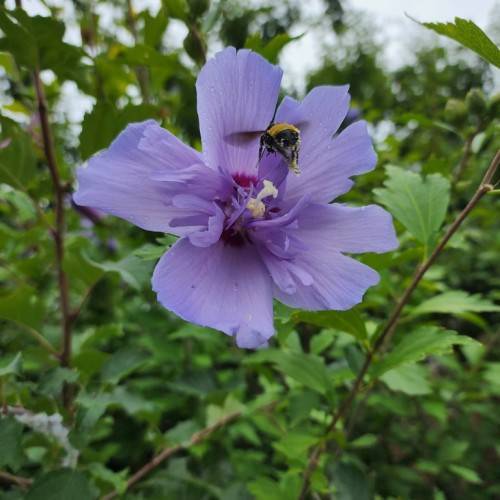
rose of Sharon
Hibiscus syriacus 'Notwoodtwo' WHITE CHIFFON
Cycle:
Perennial
Watering:
Average
Hardiness Zone:
5 - 8
Flowers:
Flowers
Sun:
Full sun,part shade
Leaf:
Yes
Growth Rate:
Low
Maintenance:
Low
Drought Tolerant:
Yes
Care Level:
Medium
watering
Rose of Sharon needs to be watered deeply and regularly to keep the soil moist. Water the plants in the morning, making sure that the roots receive a thorough drenching, and allow the top of the soil to dry between waterings. This encourages deep, strong rooting. During the summer months, water 2 to 3 times a week. In fall, reduce to once per week, as the plants will begin to naturally focus energy into growth. During prolonged periods of hot, dry weather, water more often.
sunlight
Rose of Sharon is happiest when planted in full sun, and will tolerate partial shade. The plant will grow best when it receives at least 6 hours of direct sunlight per day. If the plant is in an area that receives full sun for 8 or more hours each day, it will benefit from the additional sunlight. However, if it is in a place receiving more than 8 hours of direct sunlight each day, it may need protection from the intense heat and sunburn.
pruning
Rose of Sharon (Hibiscus syriacus 'Notwoodtwo' WHITE CHIFFON) should be pruned twice a year; once in late fall/early winter and once in late spring. In late fall/early winter, the plant should be pruned back to just 8-10 inches above the soil. This will help keep the plant in size and shape, as well as encouraging it to produce more blooms in the upcoming season. In late spring, the plant should be lightly pruned; taking off any dead or damaged branches, as well as thinning out the center of the plant to improve airflow. Pruning during the late spring should only be done if the shape and size are acceptable from the late fall/early winter pruning.
